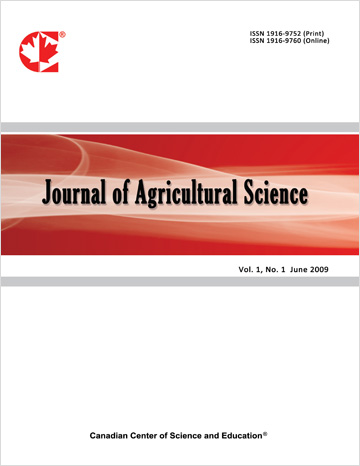Interaction Between Yellow Flesh Cassava Genotypes and Environmental Conditions Across Three Agro-Ecological Zones in Ghana
- Godwin Amenorpe
- Kwabena Darkwa
- Emmanuel Ogyiri Adu
- Paul Agu Asare
- Kingsley Joseph Taah
- Doris Mensah-Wonkyi
- Alfred Anthony Darkwa
- Elvis Asare-Bediako
- Peter Iluebbey
- Elizabeth Yaa Parkes
Abstract
New yellow-fleshed cassava genotypes are ready, highlighting the urgent need to select robust genotypes that resist diseases, thrive in diverse environments, and boost productivity for Ghanaian farmers. Nine yellow-fleshed cassava genotypes were evaluated alongside a white-fleshed reference variety in three different on-station field locations (Asuansi, Wamaso, and UCC locations) in Random Complete Block Design (RCBD) in four replications. Significant differences (p < 0.05) were found among the ten genotypes in traits like height, disease resistance, and yield. The GGE biplot analysis unveil four top-performing yellow-fleshed genotypes (12B, 1011A, 5B, 11B) consistently excelled across the Asuansi, Wamaso, and UCC locations, showing high stability and high yield potentials. It therefore recommended that these genotypes will undergo off-station field trials for validation, with the goal of introducing them as novel varieties to benefit Ghanaian farmers.
- Full Text:
 PDF
PDF
- DOI:10.5539/jas.v17n8p90
Journal Metrics
- h-index: 67
- i10-index: 839
- WJCI (2023): 0.884
- WJCI Impact Factor (2023): 0.196
Index
- AGRICOLA
- AGRIS
- BASE (Bielefeld Academic Search Engine)
- Berkeley Library
- CAB Abstracts
- ChronosHub
- CiteSeerx
- CNKI Scholar
- Copyright Clearance Center
- CrossRef
- DESY Publication Database
- DTU Library
- e-Library
- EBSCOhost
- EconPapers
- Elektronische Zeitschriftenbibliothek (EZB)
- EuroPub Database
- Excellence in Research for Australia (ERA)
- Google Scholar
- Harvard Library
- IDEAS
- iDiscover
- Jisc Library Hub Discover
- JournalTOCs
- KindCongress
- LIVIVO (ZB MED)
- LOCKSS
- Max Planck Institutes
- Mendeley
- MIAR
- Mir@bel
- NLM Catalog PubMed
- Norwegian Centre for Research Data (NSD)
- Open J-Gate
- OUCI
- PKP Open Archives Harvester
- Polska Bibliografia Naukowa
- Qualis/CAPES
- RefSeek
- RePEc
- ROAD
- ScienceOpen
- Scilit
- SCiNiTO
- Semantic Scholar
- SHERPA/RoMEO
- Southwest-German Union Catalogue
- Standard Periodical Directory
- Stanford Libraries
- SUDOC
- Swisscovery
- Technische Informationsbibliothek (TIB)
- Trove
- UCR Library
- Ulrich's
- UniCat
- Universe Digital Library
- WorldCat
- WRLC Catalog
- Zeitschriften Daten Bank (ZDB)
Contact
- Anne BrownEditorial Assistant
- jas@ccsenet.org
